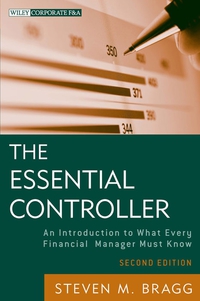Questions:
(a) Using suitable performance indicator (time-weighted rate of return or dollar-weighted
rate of return) introduced in Topic 5, determine which investors investment strategy has
the best performance? Explain your answer.
(b) Today is 1st January, 2020, investor D wishes to invest his capital into one of the three
funds above. Suppose that the investor chooses the investment fund which has the best
performance in 2019. Which investment fund should he choose? Explain your answer
using suitable performance indicator introduced in Topic 5.
(*Note: You need to briefly explain the choice of performance indicator (time-weighted rate of
return or dollar-weighted rate of return) chosen
Bonus Problem 1 (Optional, 25 marks) At the beginning of 2019, Investors A, B and Cinvests their capital in Fund A, Fund B and Fund for 1 year respectively. The following tables show the cashflows of these 3 fund accounts in 2019. Fund account A (owned by investor A) Balance before Deposit ("Note) deposit 19 Jan, 2019 1000 No deposit 1st Apr, 2019 1" Sep, 2019 31 Dec, 2019 1400 No deposit Date 1150 1500 X - 150 Fund account Blowned by investor B) Date Deposit ("Note) 1" Jan, 2019 19 May, 2019 19 Sep, 2019 31 Dec, 2019 Balance before deposit 2000 2100 2000 3500 No deposit 300 2x No deposit Fund account Clowned by investor C) Date Deposit("Note) 14 Jan, 2019 19 Apr, 2019 14 Jul, 2019 14 Oct, 2019 Balance before deposit 1500 1400 1250 1450 No deposit -300 250 500 31" Dec, 2019 2000 No deposit (*Note: If the amount is negative, it corresponds to the case of "withdrawal". For example, 300" means that the investor withdraws $300 from the account.) You are given that the dollar-weighted rate of return of fund account A is 3.7736% Questions: (a) Using suitable performance indicator (time-weighted rate of return or dollar-weighted rate of return) introduced in Topic 5, determine which investor's investment strategy has the best performance? Explain your answer. (b) Today is 19 January, 2020, Investor wishes to invest his capital into one of the three funds above. Suppose that the investor chooses the investment fund which has the best performance in 2019. Which investment fund should he choose? Explain your answer using suitable performance indicator introduced in Topic 5. (Note: You need to briefly explain the choice of performance indicator (time-weighted rate of return or dollar-weighted rate of return) chosen) Bonus Problem 1 (Optional, 25 marks) At the beginning of 2019, Investors A, B and Cinvests their capital in Fund A, Fund B and Fund for 1 year respectively. The following tables show the cashflows of these 3 fund accounts in 2019. Fund account A (owned by investor A) Balance before Deposit ("Note) deposit 19 Jan, 2019 1000 No deposit 1st Apr, 2019 1" Sep, 2019 31 Dec, 2019 1400 No deposit Date 1150 1500 X - 150 Fund account Blowned by investor B) Date Deposit ("Note) 1" Jan, 2019 19 May, 2019 19 Sep, 2019 31 Dec, 2019 Balance before deposit 2000 2100 2000 3500 No deposit 300 2x No deposit Fund account Clowned by investor C) Date Deposit("Note) 14 Jan, 2019 19 Apr, 2019 14 Jul, 2019 14 Oct, 2019 Balance before deposit 1500 1400 1250 1450 No deposit -300 250 500 31" Dec, 2019 2000 No deposit (*Note: If the amount is negative, it corresponds to the case of "withdrawal". For example, 300" means that the investor withdraws $300 from the account.) You are given that the dollar-weighted rate of return of fund account A is 3.7736% Questions: (a) Using suitable performance indicator (time-weighted rate of return or dollar-weighted rate of return) introduced in Topic 5, determine which investor's investment strategy has the best performance? Explain your answer. (b) Today is 19 January, 2020, Investor wishes to invest his capital into one of the three funds above. Suppose that the investor chooses the investment fund which has the best performance in 2019. Which investment fund should he choose? Explain your answer using suitable performance indicator introduced in Topic 5. (Note: You need to briefly explain the choice of performance indicator (time-weighted rate of return or dollar-weighted rate of return) chosen)







